Church of Holy Martyrs – Chiesa dei Santi Martiri
- Maria Scuor
- Dec 23, 2024
- 5 min read
Updated: Dec 24, 2024
Scorri a basso per l’italiano
The church of the Holy Martyrs which is also known as the church of San Graziano is located on the hill in the center of Arona on Lago Maggiore. It dates back to the 10th century when it was built as a Benedictine abbey by count Amizone who according to sources. transported the relics of the two Martyrs from Perugia, saints Fedele and Carpoforo.
The abbey was annexed next to the monastery Amizone founded and completed the construction in 979. Dedicating the church to saints Gratiniano and Felion. However there are no traces of the original abbey church and studies lead to believe that Francesco Borromeo built the new church between 1453 and 1484. The inauguration took place on June 2, 1489 when Gerolamo Calagrani was the abbot and the church wasn’t still finished. It was completed in 1506.
In 1567 Carlo Borromeo was the last abbot of the abbey and established a seminary, however the monastery and the abbey were sold to the Jesuit fathers in 1572. They added two chapels to the side of the first bay with the one facing south was intended to house the relics of the saints which returned from Milan on March 13, 1576.
In 1720 another expansion added the eastern span, the façade was redone in Baroque style and two side chapels were added. In 1773 the building became property of the parish of Arona as the Society of Jesus was suppressed. The last construction phase dates back to 1852 when the Romanesque vault in the front part of the building built by the Jesuits was replaced with a pointed vault to increase the internal height.
The current church has a nave with two bays and four side chapels. Several works of art remain such as: the marble altar depicting the Martyrs from the 15th century, an altarpiece from 1480, stained glass windows, including the one in the chapel of San Carlo that dates back to 1502.
The organ by the Serassi Brothers from 1864, located in the choir is the result of an expansion of a pre-existing instrument built by Giovanni Franzetti in 1850. The organ was restored in 1919 and is equipped with two keyboards: positive-echo organ (lower keyboard) and grand organ (upper keyboard) of 61 keys (C1-C6) with mechanical transmission. Straight pedalboard of 17 notes (C1-E2) with F2 activating third hand and rolling F#2.
The presbytery is composed of a square span covered by a cross vault. In the keystone there is the coat of arms of abbot Francesco Borromeo with the motto “Humilitas” and the date of his death, January 13, 1484. Under the altarpiece there is a shrine with the relics of Saints Graziano and Felino. Every year on March 13th, the remains of Fedele, Corporforo, Graziano and Felino are displayed for veneration by the people during the Patron Stain’s Day of festivities. This day also celebrates the restitution to the people of Arona of some of the relics of the martyrs by San Carlo Borromeo.
We have been living in Arona for almost three years and I’ve never seen this church open, however during this Christmas season they have a manger display and therefore I was able to see parts of the inside of the church as well as take in the display of the nativity's.
Here is a TikTok video and photos of this beautiful church - Ecco un video TikTok e le foto di questa bellissima chiesa
NATIVITY's- PRESEPI
Here is a TikTok video and photos of the beautiful miniature nativity's - Ecco un video TikTok e le foto dei bellissimi presepi in miniatura
Chiesa dei Santi Martiri
La chiesa dei Santi Martiri, conosciuta anche come chiesa di San Graziano, si trova sulla collina nel centro di Arona, sul Lago Maggiore. Risale al X secolo quando fu costruita come abbazia benedettina dal conte Amizone che, secondo le fonti. trasportò le reliquie dei due Martiri perugini, i santi Fedele e Carpoforo.
L'abbazia fu annessa accanto al monastero dell'Amizone, fondato e la cui costruzione fu completata nel 979. Dedicazione della chiesa ai santi Gratiniano e Felicione. Tuttavia non ci sono tracce dell'originaria chiesa abbaziale e gli studi portano a ritenere che Francesco Borromeo abbia costruito la nuova chiesa tra il 1453 e il 1484. L'inaugurazione avvenne il 2 giugno 1489 quando Gerolamo Calagrani era abate e la chiesa non era ancora terminata. Fu completato nel 1506.
Nel 1567 Carlo Borromeo fu l'ultimo abate dell'abbazia e vi istituì un seminario, tuttavia il monastero e l'abbazia furono venduti ai padri gesuiti nel 1572. Aggiunsero due cappelle ai lati della prima campata con quella rivolta a sud destinata ad ospitare le reliquie dei santi che tornarono da Milano il 13 marzo 1576.
Nel 1720 un altro ampliamento aggiunse la campata orientale, la facciata fu rifatta in stile barocco e furono aggiunte due cappelle laterali. Nel 1773 l'edificio divenne proprietà della parrocchia di Arona in quanto la Compagnia di Gesù fu soppressa. L'ultima fase costruttiva risale al 1852 quando la volta romanica nella parte anteriore dell'edificio costruita dai Gesuiti fu sostituita con una volta a sesto acuto per aumentare l'altezza interna.
L'attuale chiesa è a navata unica con due campate e quattro cappelle laterali. Rimangono diverse opere d'arte come: l'altare marmoreo raffigurante i Martiri del XV secolo, una pala d'altare del 1480, vetrate artistiche, tra cui quella della cappella di San Carlo che risale al 1502.
L'organo dei Fratelli Serassi del 1864, situato nel coro, è il risultato di un ampliamento di uno strumento preesistente costruito da Giovanni Franzetti nel 1850. L'organo è stato restaurato nel 1919 ed è dotato di due tastiere: organo a eco positivo (tastiera inferiore) e organo a coda (tastiera superiore) di 61 tasti (C1-C6) con trasmissione meccanica. Pedaliera diritta di 17 note (C1-E2) con F2 che attiva la terza mano e fa rotolamento di F#2.
Il presbiterio è composto da una campata quadrata coperta da una volta a crociera. Nella chiave di volta è presente lo stemma dell'abate Francesco Borromeo con il motto "Humilitas" e la data della sua morte, il 13 gennaio 1484. Sotto la pala d'altare si trova un'edicola con le reliquie dei Santi Graziano e Felino. Ogni anno, il 13 marzo, le spoglie di Fedele, Corporforo, Graziano e Felino vengono esposte alla venerazione del popolo durante la festa patronale della Macchia. Questa giornata celebra anche la restituzione al popolo di Arona di alcune delle reliquie dei martiri da parte di San Carlo Borromeo.
Viviamo ad Arona da quasi tre anni e non ho mai visto questa chiesa aperta, tuttavia durante questo periodo natalizio hanno una mostra dei presepi e quindi ho potuto vedere parti dell'interno della chiesa e l'esposizione del presepi.


















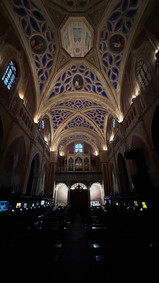


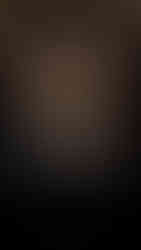






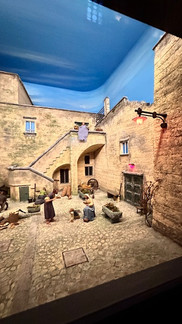




















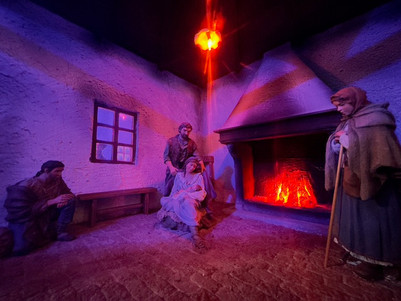



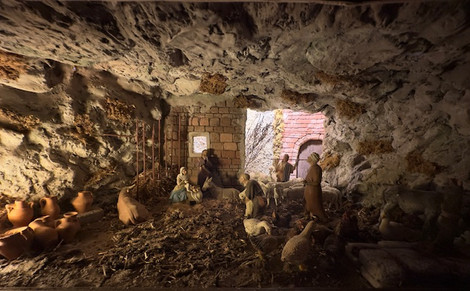
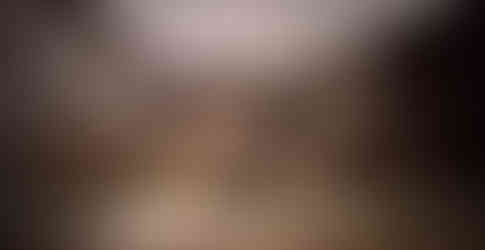



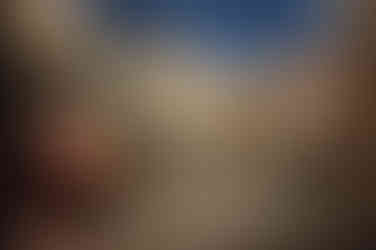

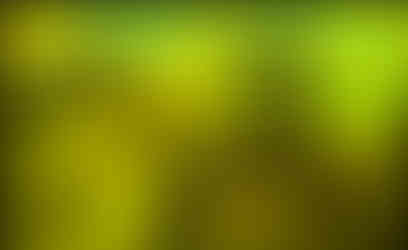


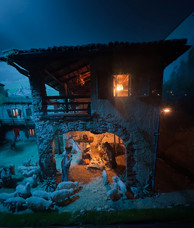
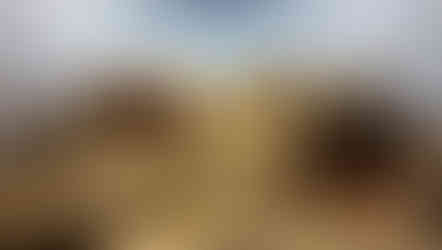


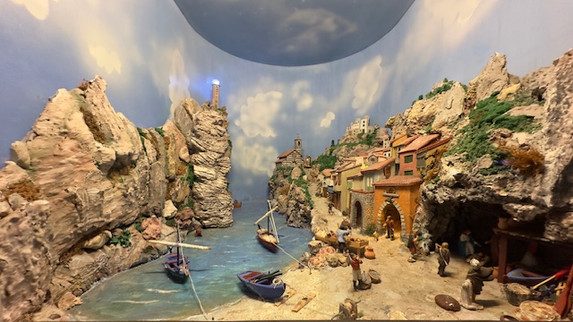


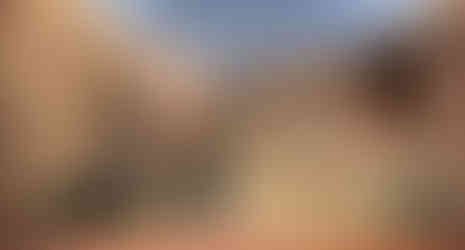

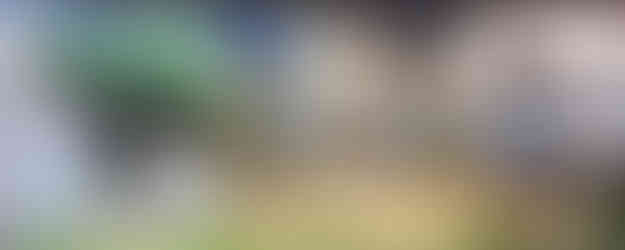

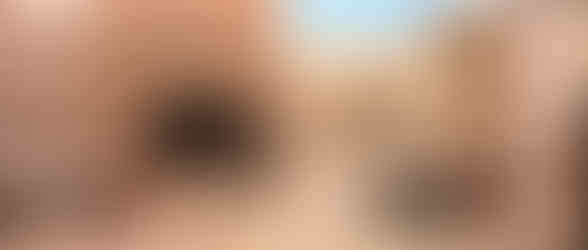






Comentarios